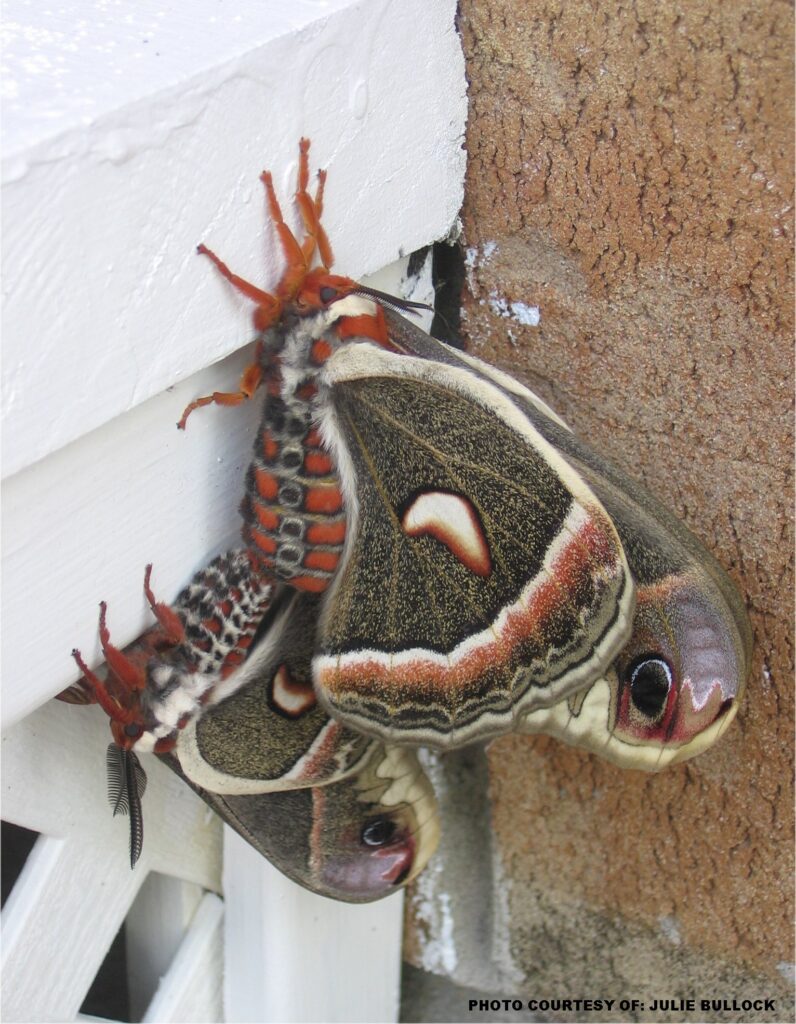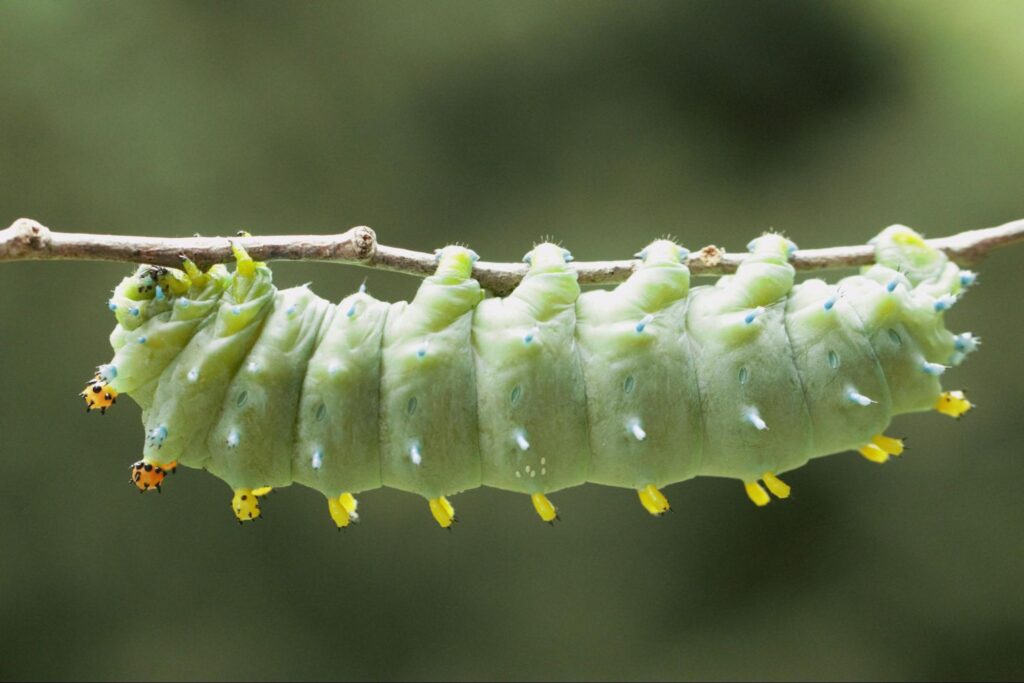The Cecropia Moth: Art on the Wing
Cecropia moths are night-loving works of art — and vital to the ecosystem as pollinators and food for predators.
The largest moth species in North America, Cecropia is named after the mythical ruler of Athens, Cecrops. He was said to have a man’s head and torso with a snake’s form below. You can almost see this fanciful being in the beautiful wing markings of the moth. The eyespots and “commas,” if looked at in the right way, hint at a snake’s face. Predators might think twice about tackling that face.

Cecropia moths (Photo: Julie Bullock)
Like all moths, the Cecropia moth goes through several life stages: egg, larva (caterpillar), pupa (chrysalis), and adult (imago). The female lays its eggs on both sides of a leaf from the host plant, which include such trees as oak, beech, cherry and apple. The eggs hatch into caterpillars which, being jam-packed with protein, are a favourite meal for many birds.
The caterpillars will grow up to five inches long and eventually spin silk cocoons (the chrysalis stage). Inside the cocoon, they stay dormant until they are ready to emerge as adults.

Cecropia caterpillar (Photo: Steven Ardron)
The final stage, the adult stage, is fleeting even by insect standards. Adult Cecropia moths last about two weeks. They can’t eat during this stage, since they have no digestive system or moveable mouth parts. About the only thing they can do is mate! An adult Cecropia moth is basically a work of art designed to create more works of art.
Populations of Canada’s most endangered species have declined by more than 50 percent over the last 50 years. Add your voice for nature now by sending a personal letter to the Prime Minister, Environment Minister, Oceans Minister, and your local MP. Help protect birds and other wildlife!
What’s the difference between a butterfly and a moth?
Both moths and butterflies belong to the order Lepidoptra, but what’s the difference?
- Wings: when resting, butterflies generally hold their wings closed, often raised on either side of their body. At rest, moths hold their wings open over their abdomen.
- Antennae: butterflies have long, thin antennae with bulb-like tips. Moths have feathery, thick antennae.
- Behavior: butterflies tend to be active during the day and moths at night, although there are exceptions.
Moths, to your stations!
A great place for observing Cecropia moths is the Long Point Biosphere Region, a 40-km long sand spit in Norfolk County, Ontario, on the north shore of Lake Erie. Staff there have established moth stations to monitor moth species. These stations, equipped with simple grey boards and lights, attract moths and make it easier to observe them. The primary goal is to monitor the diverse moth species in the region and contribute valuable data to understanding their ecological roles and distribution.
Find out more about the moth observation project through i-Naturalist.
Want to help Canadian species like the Cecropia moth? Stay tuned with the latest in Canadian nature by subscribing for email updates. You’ll receive regular updates about what we’re doing to protect Canadian nature and how you can help.



